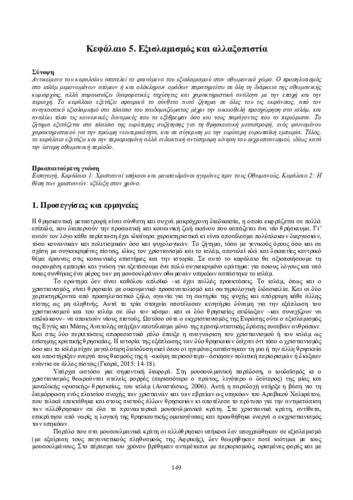| Title Details: | |
|
Islamization and conversion |
|
| Authors: |
Gkara, Eleni Tzedopoulos, Giorgos |
| Reviewer: |
Stamatopoulos, Dimitrios |
| Subject: | HUMANITIES AND ARTS > HISTORY > GENERAL HISTORY, THEORY > OTTOMAN HISTORY HUMANITIES AND ARTS > HISTORY > SPECIALIZED HISTORIES HUMANITIES AND ARTS > HISTORY > GENERAL HISTORY, THEORY > MODERN HISTORY |
| Keywords: |
Christians
Muslims Ottoman Empire Church Islamisation Syncretism Intercommunal Relations Confessionalization Conversion |
| Description: | |
| Abstract: |
The chapter deals with the phenomenon of Islamization in the Ottoman lands. Conversion to Islam of individuals or entire groups was observed throughout the Ottoman rule, but had different speeds and characteristics depending on the period and the region. The chapter comprehensively examines this complex issue in all its aspects, from the forced Islamization in the course of the “child-levy” (devşirme) to the voluntary accession to Islam, and discusses both the social dynamics that promoted and the factors that constrained it. The issue is examined in the context of the broader debate on religious conversion, a phenomenon characteristic of early modernity, and in comparison with the wider European experience. Finally, the chapter also examines the limited –but indicative– inverse movement of Christianization, especially during the late Ottoman period.
|
| Table of Contents: |
1. Approaches and interpretations
1.1. Interpretation issues 1.2. Historiographical approaches 2. The act of Islamization 3. The issue of forced Islamization 3.1. A useful comparison: Christian Europe and the Ottoman Empire 3.2. Provisions of the law 3.3. Institutionalized Islamization within the framework of the devşirme or “child-levy” 3.4. The dilemma “Islamization or death” 4. Social dynamics and factors of Islamization 4.1. Sources and hypotheses 4.2. The importance of the institutional dimension 4.3. Doubt about the faith 4.4. Religious syncretism and the activity of the dervish orders 4.5. Tensions, conflicts and desires of everyday life 4.5.1. Love and marriage 4.5.2. Fathers and masters 4.5.3. Expectations for better life 4.5.4. Problems with the law 4.5.5. Conflicts and power relations 4.5.6. Intra-community disputes 4.6. The burden of taxes 4.7. European “renegades” 5. The process of Islamization in the Ottoman lands 5.1. From the Christian Byzantine to the Muslim Ottoman Empire 5.1.1. Byzantino-Turkic confrontation and the Islamization of Asia Minor 5.1.2. Ottoman conquest and the incorporation of Christian nobility 5.2. Ottomanization of the urban space and Islamization 5.3. The case of Bosnia 5.4. Collective Islamization in the countryside 5.4.1. Islamization factors 5.4.2. Centers and causes of Islamization 6. Procedures of (re-)Christianization 6.1. In the maelstrom of war 6.2. Christianization and reform, conversion and nationalism |
| Linguistic Editors: |
Lampada, Despoina |
| Type: |
Chapter |
| Creation Date: | 2015 |
| Item Details: | |
| License: |
http://creativecommons.org/licenses/by-nc-nd/3.0/gr |
| Spatial Coverage: |
Ottoman Empire |
| Temporal Coverage: |
14th-20th cc. |
| Handle | http://hdl.handle.net/11419/2886 |
| Bibliographic Reference: | Gkara, E., & Tzedopoulos, G. (2015). Islamization and conversion [Chapter]. In Gkara, E., & Tzedopoulos, G. 2015. Χριστιανοί και μουσουλμάνοι στην οθωμανική αυτοκρατορία [Undergraduate textbook]. Kallipos, Open Academic Editions. https://hdl.handle.net/11419/2886 |
| Language: |
Greek |
| Is Part of: |
Χριστιανοί και μουσουλμάνοι στην οθωμανική αυτοκρατορία |
| Publication Origin: |
Kallipos, Open Academic Editions |


